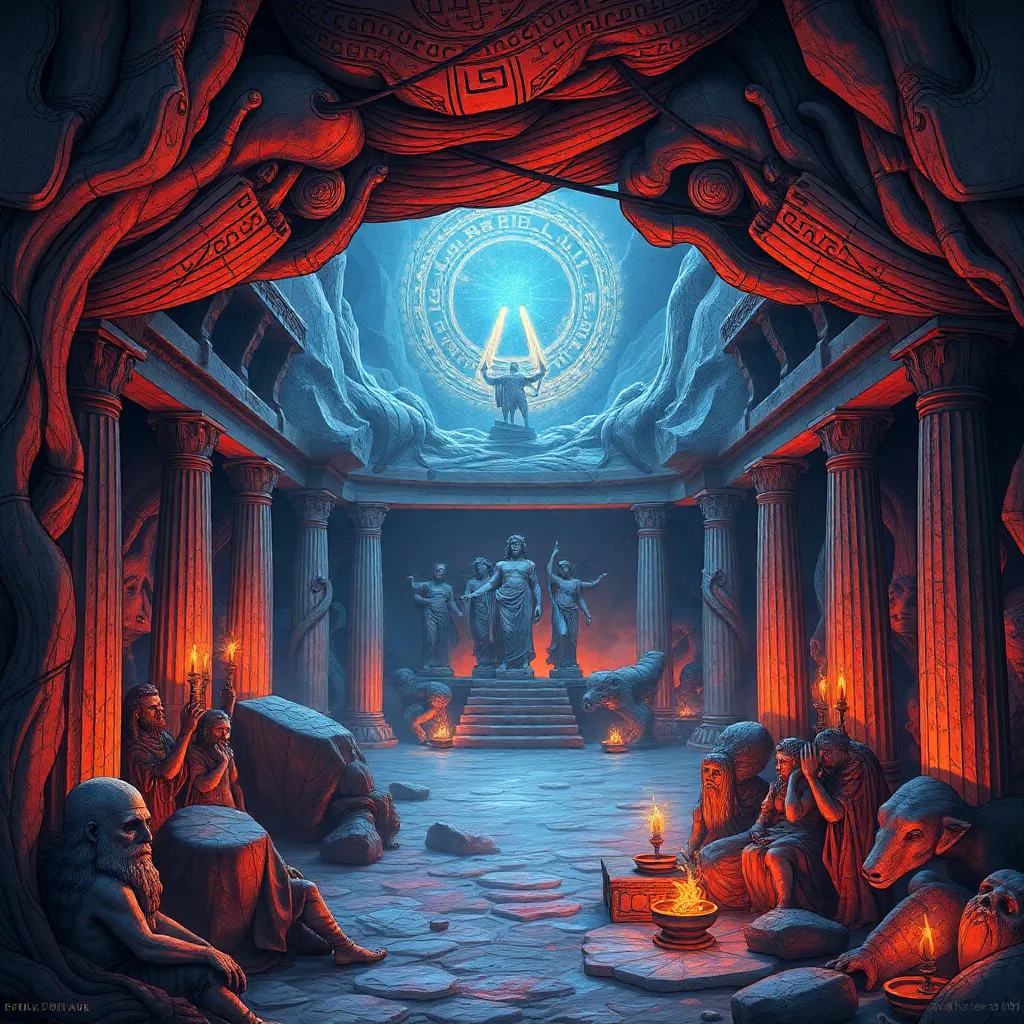The Underworld in Greek Mythology: A Comprehensive Overview of Its Significance
I. Introduction to the Underworld
The Underworld, known as Hades in Greek mythology, is a complex realm that serves as the final destination for souls after death. It is not merely a place of darkness and despair but a significant component of the ancient Greek understanding of life, death, and the afterlife.
The Underworld holds immense importance in Greek mythology, acting as a reflection of human fears, beliefs, and the societal views on morality and justice. It is a place where the souls of the deceased are judged and assigned their fates based on their actions in life.
This article aims to provide a comprehensive overview of the Underworld, exploring its structure, key deities, the fate of souls, and its cultural significance both in ancient times and today.
II. The Structure of the Underworld
The Underworld is often divided into several distinct realms, each serving different functions and accommodating various types of souls. The primary realms include:
- Tartarus: A deep abyss used as a dungeon of torment for the wicked and a place of punishment for the Titans.
- Erebus: The area of the Underworld where souls pass immediately after death, often described as a dark and shadowy region.
- Elysian Fields: A paradise for the virtuous and heroic souls, where they experience eternal bliss and happiness.
Key features of the Underworld’s geography include mountains, rivers, and vast expanses of darkness. One of the most notable geographical features is the River Styx, which forms the boundary between the living world and the Underworld.
The River Styx is crucial to the mythology surrounding the Underworld, as souls must cross it to reach their final resting place. Charon, the ferryman of the dead, plays a vital role here, transporting souls across the river for a fee, which often required placing a coin in the deceased’s mouth for payment.
III. Deities of the Underworld
The Underworld is governed by several significant deities, each playing a unique role in its functioning:
- Hades: The ruler of the Underworld, Hades presides over the realm of the dead. He is often depicted as a stern and unyielding figure, but not inherently evil.
- Persephone: The queen of the Underworld, she spends half of the year with Hades and the other half on Earth. Her story symbolizes the cycle of life, death, and rebirth.
- Other significant figures:
- Charon: The ferryman who transports souls across the River Styx.
- Thanatos: The personification of death, often depicted as a gentle figure.
- Hecate: A goddess associated with magic, witchcraft, and the night, often invoked in matters concerning the dead.
IV. The Souls of the Dead
Upon death, the soul embarks on a journey to the Underworld, which involves several key stages:
- The journey of the soul: After death, the soul is guided by Hermes, the messenger god, to the Underworld.
- The judgment process: The souls undergo judgment by three ancient kings: Minos, Rhadamanthus, and Aeacus, who determine their fates based on their earthly lives.
The outcomes of this judgment can vary:
- Punishment: Wicked souls face eternal torment in Tartarus.
- Reward: Virtuous souls find peace in the Elysian Fields.
- Rebirth: Some souls may be reincarnated, returning to the mortal realm to live again.
V. Symbolism and Themes Associated with the Underworld
The Underworld is rich in symbolism and themes that resonate deeply within Greek culture:
- Death and the afterlife: The Underworld represents the Greeks’ understanding of mortality and what lies beyond life.
- Justice and retribution: The judgment of souls signifies a moral order, reinforcing the idea that one’s actions in life have consequences.
- Reflection of human fears: The Underworld embodies fears of the unknown and the inevitability of death, serving as a cautionary tale about living a virtuous life.
VI. The Underworld in Greek Literature and Art
The Underworld has been a prominent theme in various works of ancient literature and art:
- Ancient texts: Works by Homer, Hesiod, and Virgil describe the Underworld and its inhabitants, providing insight into the ancient Greek worldview.
- Artistic depictions: Pottery, sculpture, and murals from ancient Greece often illustrate scenes from the Underworld, showcasing the beliefs and fears of the time.
- Influence on later literature: The themes and stories of the Underworld have inspired countless works in Western literature, from Dante’s “Inferno” to modern novels and films.
VII. The Underworld’s Influence on Modern Society
The legacy of Greek mythology, particularly the Underworld, continues to influence contemporary thought and culture:
- Modern interpretations: Many cultures have their own concepts of the afterlife that echo elements of the Greek Underworld.
- Popular media: Films, books, and video games often draw on themes from the Underworld, showcasing its lasting impact on storytelling and entertainment.
VIII. Conclusion
The Underworld in Greek mythology is a multifaceted realm that offers profound insights into ancient beliefs about life, death, and morality. Its significance extends beyond myth, influencing literature, art, and contemporary culture.
By exploring the Underworld, we gain a deeper understanding of Greek mythology’s impact on human thought and the universal themes that continue to resonate through time.
For those interested in delving deeper into the rich tapestry of Greek mythology, the Underworld serves as an intriguing gateway to explore the complexities of ancient beliefs and their relevance in the modern world.




